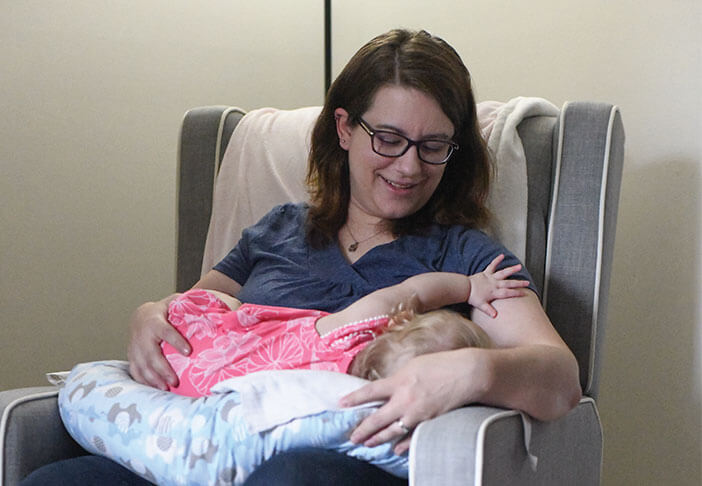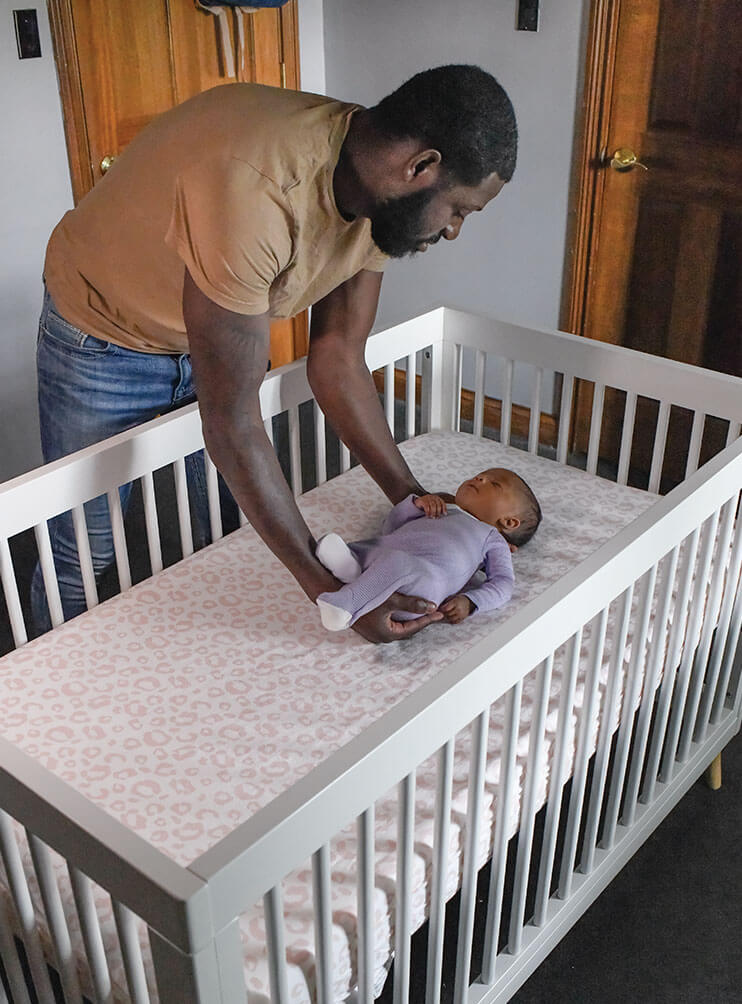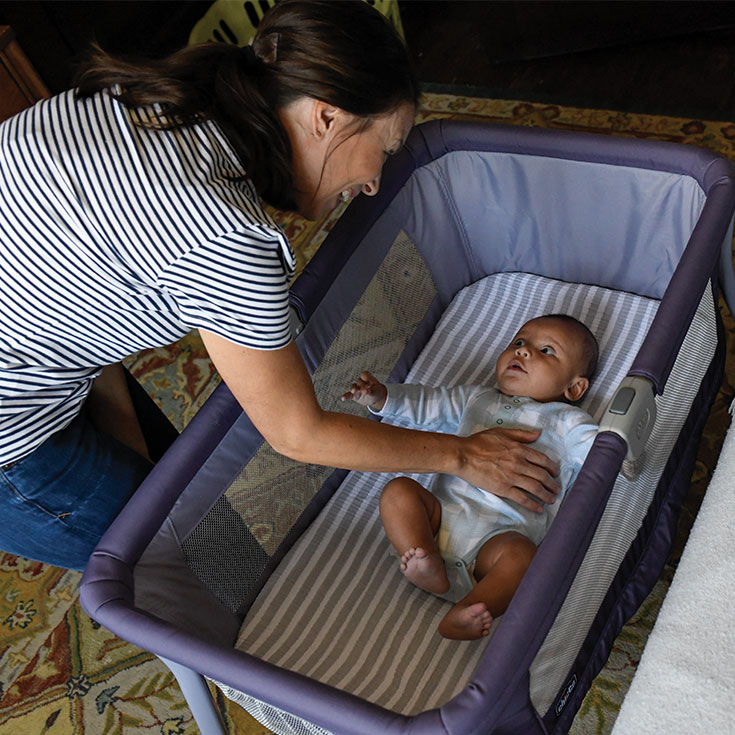
La lactancia materna y el sueño seguro van de la mano para mantener a tu bebé sano y seguro.
Lactancia materna

- Darle un chupete al bebé puede reducir el riesgo de síndrome de muerte súbita del lactante (SMSL), pero se debe esperar para usar un chupete hasta que tú y el bebé se sientan cómodos con la lactancia materna.
- Tu leche le da nutrientes a tu bebé y lo mantiene feliz y saludable. ¡También es genial para tu salud!
- Los bebés que son amamantados tienen un menor riesgo de sufrir el síndrome de muerte súbita del lactante.
- Lo mejor es darle solo leche materna durante los primeros seis meses. Continuar amamantando durante dos años y más (agregando comidas a los seis meses) amplía los numerosos y excelentes beneficios.
Sueño seguro
- Siempre acuesta a tu bebé boca arriba durante todas las horas de sueño: en las siestas y a la noche, hasta que cumpla un año.
- Colócalo en una cuna, un moisés o una cuna portátil con un colchón firme y una sábana bien ajustada.
- No uses almohadas, mantas, peluches ni protectores de cuna en ningún lugar del área de dormir del bebé. Usa un saco de dormir en lugar de una manta si es necesario.
- En promedio, mueren dos bebés por semana en Indiana a causa del sueño inseguro. Puedes proteger a tu bebé siguiendo los pasos del sueño seguro y amamantando de manera segura.
-
Para obtener más información sobre el sueño seguro de los bebés, visita
https://indiana.wicresources.org/safe-sleep/.

Comparte la habitación y no la cama

La lactancia materna te ayuda a vincularte con el bebé. Estar cerca de tu bebé te permite aprender las señales de cuándo tiene hambre y a sostener la lactancia materna.
Compartir habitación: mantén un espacio seguro para que el bebé duerma en tu habitación durante al menos seis meses.
Puedes amamantar a tu bebé en tu propia cama. Cuando termines de alimentarlo, vuelve a poner al bebé en su propio espacio para dormir, pero a la vista y cerca de donde tú duermes.

Obtén más información sobre el sueño seguro de los bebés.
Esta institución es un proveedor que ofrece igualdad de oportunidades.